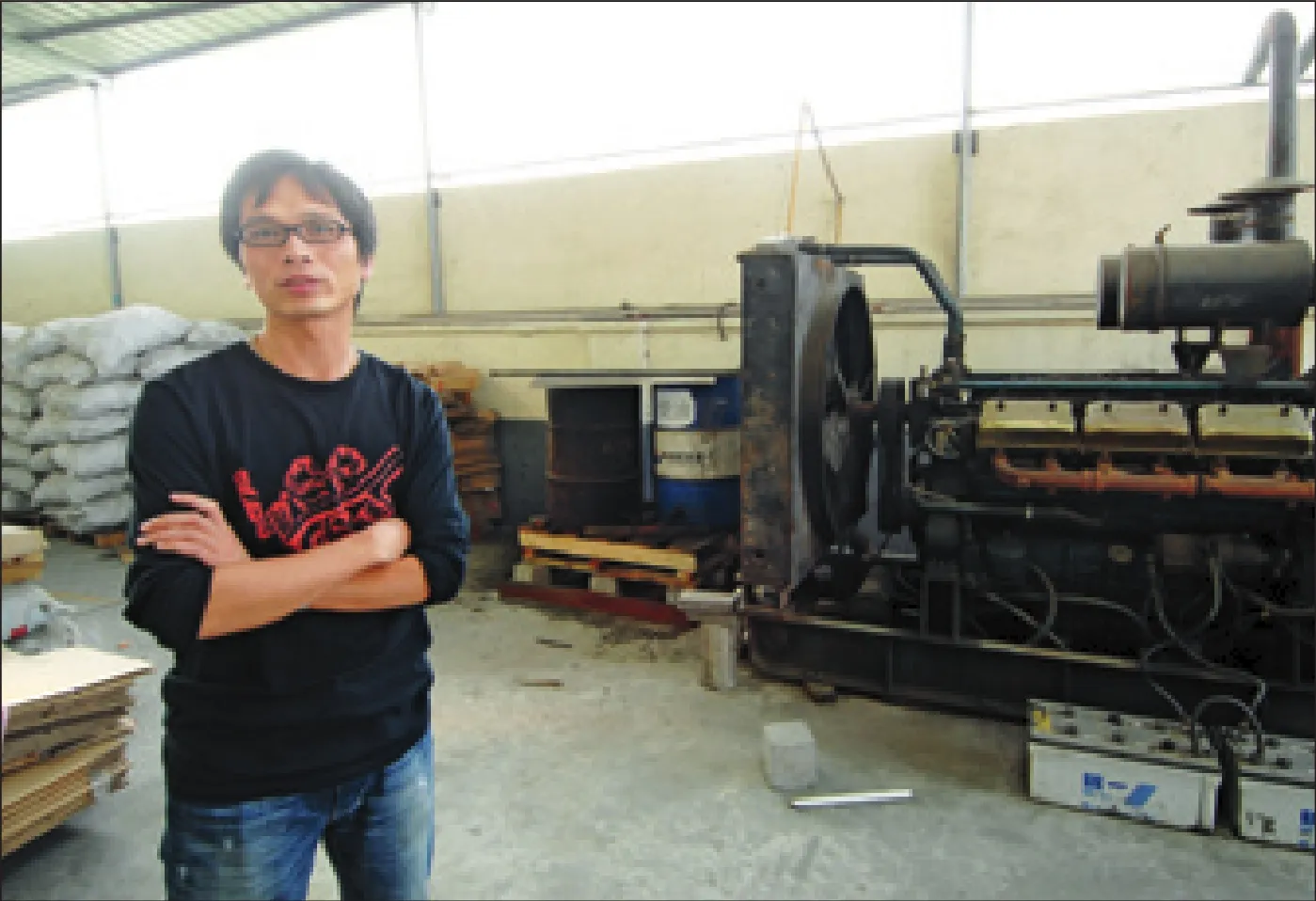Clouded Prospects
2011-10-14ByHUYUE
By HU YUE
Clouded Prospects
By HU YUE

BUSY PRODUCTION: Employees in a sock plant in Yiwu, Zhejiang Province,work diligently on sewing machines to fill orders
Small and medium-sized enterprises in Zhejiang Province face serious headwinds
In Wenzhou of Zhejiang Province, the boomtown of China’s private economy,three renowned manufacturers—Jiangnan Leather, Portman Coffee and electronics maker Sanqi Group—have recently declared bankruptcy, sparking concerns that a wave of factory closures may be sweeping through the region. Newspapers have been filled with reports that 20 percent of Wenzhou’s nearly 300,000 small and medium-sized enterprises (SMEs) have halted production.
“The situation is even worse than in 2008 when the financial crisis rippled through China, causing massive plant closures and painful job losses,” said Zhou Dewen,Deputy Director of the China Association of Small and Medium Enterprises.
As policymakers twist harder on the country’s credit screws, smaller businesses are finding themselves financially strained and with the ominous shadow of costs in fl ation hanging over their growth prospects,said Zhou.
The China Banking Regulatory Commission (CBRC) and Zhejiang Provincial Small and Medium Enterprise Bureau said massive factory closures are not going to happen and the three corporate failures are isolated cases, in part due to mismanagement and reckless expansion. “But it is true that many SMEs are already swimming in the red ink,” they said.
Data from the Zhejiang Provincial Small and Medium Enterprise Bureau showed, in the first quarter, Zhejiang’s SMEs above a designated size reported an industrial output value of 934.91 billion yuan ($143.8 billion), up 25.5 percent from a year ago, 8.5 percentage points lower than the same period last year. In January and February alone, 6,757 Zhejiang’s SMEs incurred combined losses of 4.87 billion yuan ($749.2 million), surging 22 percent from the previous year.
The current fear is the downturn may be spreading nationwide. The Ministry of Industry and Information Technology (MIIT)said 15.8 percent of SMEs above a designated size spilled red ink in the fi rst two months of this year, 0.3 percentage points higher than a year earlier.
MIIT chief engineer and spokesman Zhu Hongren said global economic uncertainties have had a deep impact on SMEs, especially export-oriented ones.
“It’s an unintended and unfortunate consequence when credit is tightened through quotas,” said Wang Tao, a UBS economist in Hong Kong. “Small companies suffer fi rst, and suffer the most.”
The cause
Serious costs inflation fuelled by rising land and labor costs is eating into the pro fi ts of smaller companies, said Guo Tianyong,Director of the Research Center of China’s Banking Industry at the Central University of Finance and Economics.
In 2010, 30 provinces, municipalities and autonomous regions raised their minimum wage standards by at least 10 percent in a move to bridge the growing rich-poor gap.
Surging international commodities prices also translate into higher producer prices in China through trade links, he said.
Meanwhile, the yuan’s appreciation is draining life from vulnerable exporters, and power shortages that began in May forced many to shut down entire production lines,said Guo.
On top of this came tightened monetary policies as the country continues its fight against inflation. The People’s Bank of China, the central bank, raised interest rates twice and hiked the reserve requirement ratios six times this year.
It is not without justi fi cation commercial banks consider vulnerable smaller businesses larger risks, fearing they will get stuck with bad debts. To fend off credit risks, commercial banks have imposed much higher lending rates on SMEs and increased their collateral requirements.
“As the domestic monetary environment tightens, we have grown very selective of our clients,” a banker at the Zhejiang branch of the Industrial and Commercial Bank of China, who refused to be identi fi ed, told21st Century Business Herald. “Banks tend to shut the door to SMEs since they lack a sound credit record and a sound future.”
Comprehensive borrowing costs of SMEs in China increased more than 13 percent in the fi rst four months this year, said a recent report by the MIIT. The dire situation for SMEs is expected to continue as policy makers pledge to keep the tightening measures steady.
The financing bottleneck has forced many Zhejiang SMEs to turn to underground banks, triggering higher debt risks. A recent Wenzhou Financial Services Office survey of over 350 local enterprises showed polled companies were relying on underground banks for 16 percent of their operational capital at the end of March, 6 percentage points higher than a year ago.
Among the crisis-stricken SMEs is the Zhenqing Optical Co. Ltd., an eyeglass manufacturer based in Wenzhou.
“The company is struggling to make ends meet as raw material prices head north,”said Ye Jianqing, chairman and founder of the company.
“I have been in the business for 15 years and encountered a lot of obstacles. But this is the first time the crisis has escalated to such an extent,” Ye said. “Many other business owners in Wenzhou have given up and plunged into real estate and capital market speculation.”
Qian Ming, Deputy General Manager of Zhejiang Chenghui Textile Co. Ltd., said the lack of access to bank credit was the biggest problem.
“As costs inflation worsens, the company has received a heavy blow this year,”he said.
Qian said he applied for bank loans to keep company operations afloat, but after two months of waiting he eventually received a rejection letter from the bank.
“Loans from underground banks are easier to obtain, but the interest rates are amazingly high,” he said. “Without needed capital, we can hardly survive, not to mention expand.”
Even larger companies have felt the pinch. “We are considering plans to close poorly performing outlets and use the limited capital to focus on pro fi table products,” said Zheng Julin, Chairman of Zhejiang Xinhua Group, a manufacturer of specialty paper based in Hangzhou, capital of Zhejiang.
A helping hand
SMEs account for 99 percent of Chinese enterprises and around 80 percent of job creation, and contribute more than 60 percent to the country’s GDP, said the National Bureau of Statistics. Policy incentives to heal the woes of SMEs are already underway.

POWER SHORTAGE: A business owner stands next to a diesel generator at his workshop in Shangyu, Zhejiang Province. His umbrella company now relies on the generator to meet part of its electricity needs
On June 7, 2011, the CBRC announced new measures to soothe their thirst for capital.
The CBRC said a loan of less than 5 million yuan ($771,000) to a small enterprise could be viewed as retail lending, and will not be subject to loan-to-deposit ratio supervision. Commercial banks will be allowed to tolerate higher bad loans to small companies.
In addition, banks will be encouraged to open more branches if their growth in small enterprise loans outpaces that of overall loans for two straight years. Those banks whose outstanding small enterprise loans meet a certain proportion of their total corporate loans will be given priority to issue bonds and the raised fi nancing must be used to distribute loans to small businesses.
By the end of this April, China’s outstanding loans to small businesses totaled 9.45 trillion yuan ($1.45 trillion), rising 7.1 percent from December 2010, 0.8 percentage points faster than the overall loans.
Lian Ping, chief economist at the Bank of Communications, said banks are wary of lending to small companies due to concerns over bad debt risks.
“These policies came at the right time,and they are expected to help cash-hungry companies tap funding sources,” said Lian.
Banks can also generate handsome returns from small enterprise loans due to higher interest rates and then adequately cover the risks, he said.
Meanwhile, the country has handed out generous incentives for SMEs, such as tax waivers, and accelerated development of micro-credit. There were 2,614 micro-credit companies in China in 2010, soaring from 1,334 in 2009, said the central bank.
The growth enterprise board ChiNext was also launched in October 2009, raising 15.5 billion yuan ($2.4 billion) for the first 28 listed technology and innovation-driven startup companies.
Zhao Xijun, Deputy Director of the Financial and Securities Institute at the Renmin University of China, suggested improving the credit guarantee system in China and broadening fi nancing channels of SMEs,such as private equity funds, bond auctions,stock listing and pawns.
Yao Jingyuan, chief economist with the National Bureau of Statistics, said a more permanent solution is to allow private investors into the financial industry, especially smaller fi nancial institutions like rural banks.
“The enterprises must increase their account transparency and provide timely and reliable financial reporting to demonstrate their solvency,” said Chen Naixing, Director of the Research Center for Small and Medium Enterprise at the Chinese Academy of Social Sciences.
